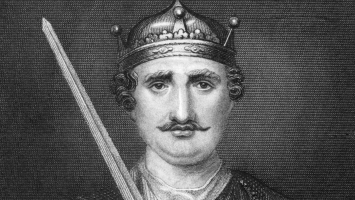Top 7 Interesting Facts about Cleopatra
Cleopatra VII Philopator (69 BC – 10 August 30 BC) was the last active ruler of Egypt's Ptolemaic Kingdom from 51 to 30 BC. She belonged to the Ptolemaic ... read more...dynasty and was a descendant of its founder, Ptolemy I Soter, a Macedonian Greek general and Alexander the Great's companion. Here are the 7 interesting facts about Cleopatra you should know.
-
One of the most interesting facts about Cleopatra is that she was the last active ruler of Egypt's the Ptolemaic Kingdom. Cleopatra most likely accompanied her father, Ptolemy XII Auletes, to Rome in 58 BC, when an uprising in Egypt (a Roman client state) permitted his rival daughter Berenice IV to assume his kingdom. Berenice was assassinated when Ptolemy returned to Egypt with Roman military help in 55 BC. When he died in 51 BC, Cleopatra and her brother Ptolemy XIII began a shared reign, but a feud between them led to civil war. Pompey escaped to Egypt after losing the Battle of Pharsalus in 48 BC to his adversary Julius Caesar (a Roman dictator and consul) in Caesar's Civil War. Ptolemy XII had considered Pompey a political ally, but at the suggestion of his court eunuchs, Ptolemy XIII had Pompey ambushed and killed before Caesar arrived and captured Alexandria. Caesar then attempted to reconcile the two Ptolemaic siblings, but Potheinos, Ptolemy's chief adviser, saw Caesar's demands as favoring Cleopatra, so he besieged her and Caesar at the palace.
Ptolemy XIII died in the 47 BC Battle of the Nile, shortly after reinforcements lifted the siege; Cleopatra's half-sister Arsinoe IV was later exiled to Ephesus for her involvement in carrying out the siege. Caesar declared Cleopatra and her brother Ptolemy XIV joint rulers but continued to have a private affair with Cleopatra, which resulted in Caesarion, Caesar's son. Cleopatra visited Rome as a client queen in 46 and 44 BC, staying at Caesar's house.
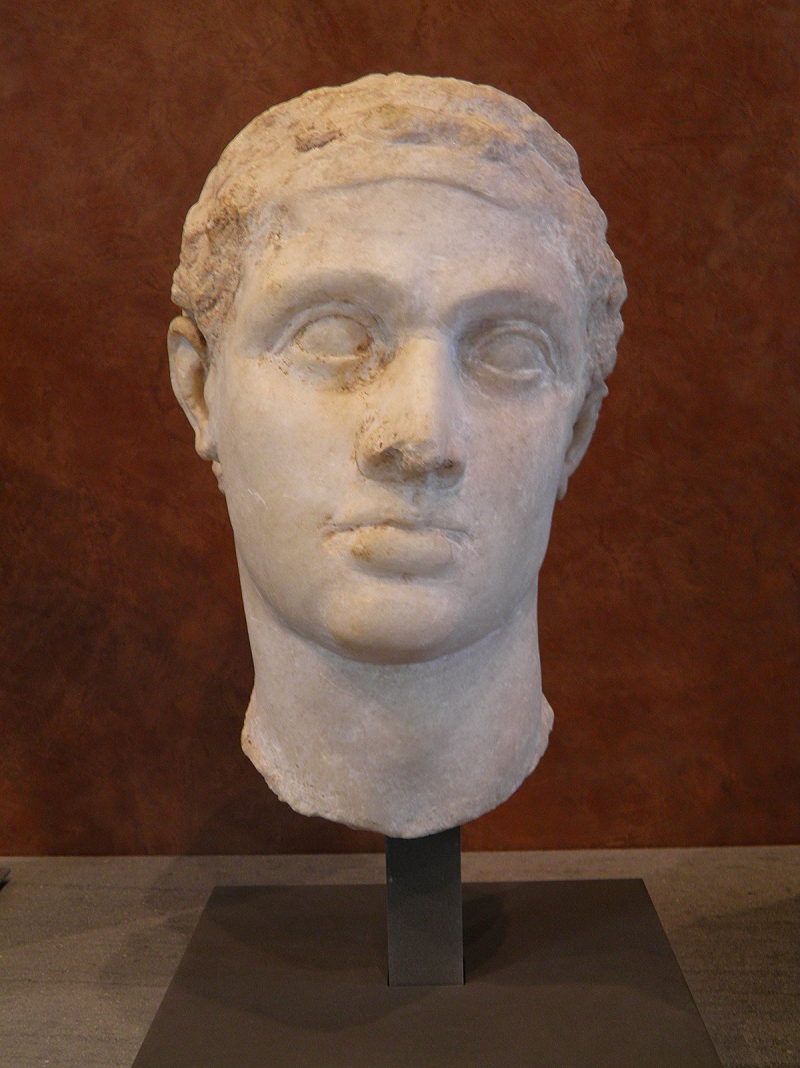
Ptolemy XII Auletes -Photo:commons.wikimedia.org 
Ptolemy XIII (her brother) -Photo: history.com -
It is a fact that she was well educated. Cleopatra VII was born in early 69 BC to Ptolemaic pharaoh Ptolemy XII Auletes and an unknown mother, most likely Ptolemy XII's sister-wife Cleopatra V Tryphaena, who was also the mother of Cleopatra's older sister, Berenice IV. Her father was known as an arrogant ruler who lived a lavish lifestyle while causing dynastic strife with the banishment of Cleopatra V from the palace in late 69 BC (a few months after the birth of Cleopatra VII). During his wife's more than decade-long absence, his three younger children (Cleopatra's sister Arsinoe IV and brothers Ptolemy XIII and Ptolemy XIV) were born.
Philostratos, her childhood tutor, taught her the Greek techniques of oration and philosophy. Cleopatra apparently studied in the Musaeum (including the Library of Alexandria) during her youth and composed Greek medical works, maybe inspired by the physicians at her father's royal court. Examples of powerful, inspirational royal female predecessors (some of whom lived long before the Ptolemaic dynasty) such as Sobekneferu, Hatshepsut, and Nefertiti were available to her in historical documents preserved by the 3rd-century BC Ptolemaic-era native Egyptian historian Manetho.
Ptolemaic pharaohs were anointed at Memphis by Egyptian priests of Ptah but lived in the multicultural and predominantly Greek metropolis of Alexandria, built by Alexander the Great of Macedon. They only spoke Greek and ruled Egypt as Hellenistic Greek monarchs, refusing to learn Egyptian. By maturity, Cleopatra could understand and speak a variety of languages, including Egyptian, Ethiopian, Trogodyte, Hebrew (or Aramaic), Arabic, Syrian (possibly Syriac), Median, Parthian, and Latin, but her Roman colleagues would have preferred to converse with her in her native Koine Greek. Aside from the three languages, she was known to be able to read and write in, Greek, Egyptian, and Latin, these languages reflected Cleopatra's expansionist territorial ambitions and desire to reclaim African and Asian lands lost to the Ptolemaic Empire.
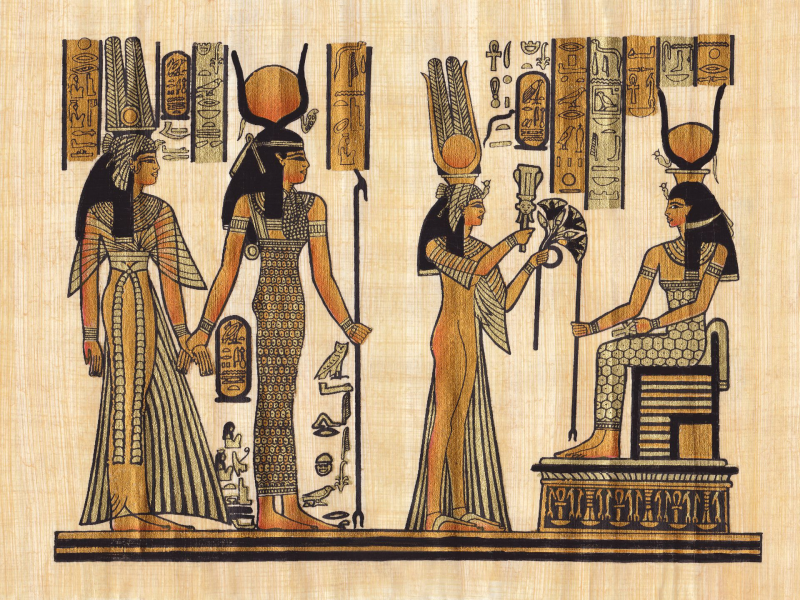
Cleopatra's Family Tree -Photo: thoughtco.com 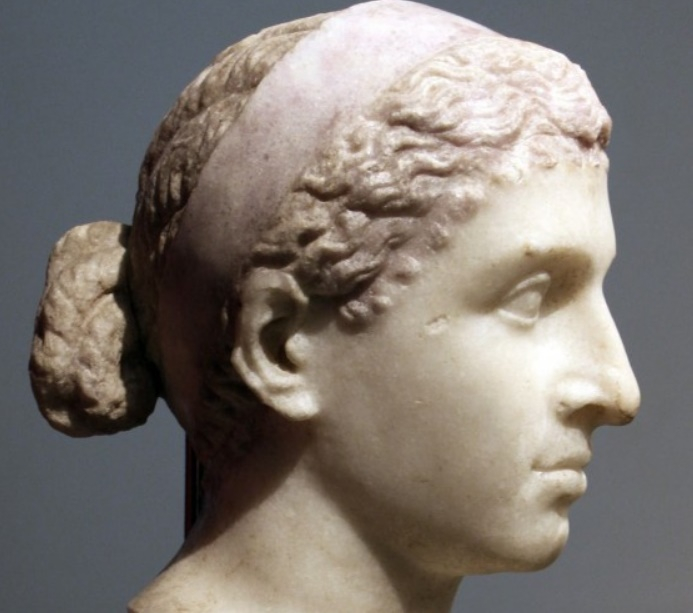
Photo: blog.oup.com -
One of the most interesting facts about Cleopatra is that Cleopatra married her brother. Ptolemy XII died before March 22, 51 BC, which was the date of Cleopatra's first recorded act as queen: her journey to Hermonthis, near Thebes, to install a new sacred Buchis bull (worshiped as an intermediary for the god Montu in ancient Egyptian religion). The Roman Senate was not informed of Ptolemy's death until 30 June or 1 August 51 BC; Cleopatra may have concealed the news until she could win the crown. Cleopatra most likely married her brother, Ptolemy XIII, but the relationship is unknown. Ptolemy II and his sister, Arsinoe II, initiated the incestuous Ptolemaic practice of sibling marriage, but the long-held royal Egyptian ritual was regarded obscene by contemporary Greeks.
Although prominent opponents of this incestuous practice were occasionally ruthlessly punished and suppressed under the combined reign of Ptolemy II and Arsinoe II, by the time of Cleopatra's reign, sibling marriages were regarded as a regular arrangement for Ptolemaic kings. By 29 August 51 BC, official records began listing Cleopatra as the sole ruler, indicating that she had rejected her brother as a co-ruler.
Despite Cleopatra's rejection, Ptolemy XIII retained powerful allies, most notably his childhood tutor, regent, and administrator of his domains, eunuch Potheinos. Achilles, a notable military leader, and Theodotus of Chios, another tutor of Ptolemy XIII, were also members of the plot against Cleopatra. Cleopatra appears to have formed a brief alliance with her brother Ptolemy XIV, but by the autumn of 50 BC, Ptolemy XIII had gained the upper hand in their battle and began signing documents with his name first, followed by the formation of his first regnal date in 49 BC.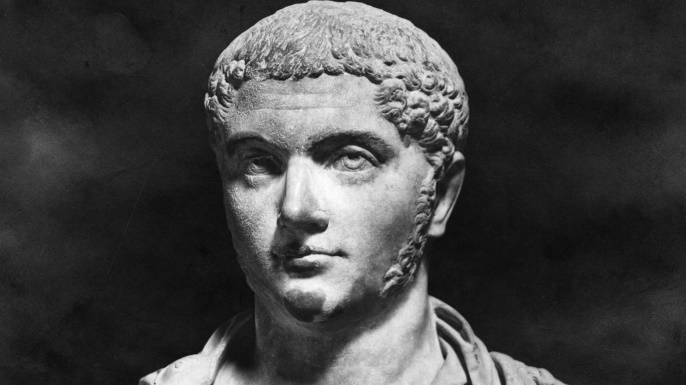
Ptolemy XIII -Photo: historybehindassassinscreed.tumblr.com 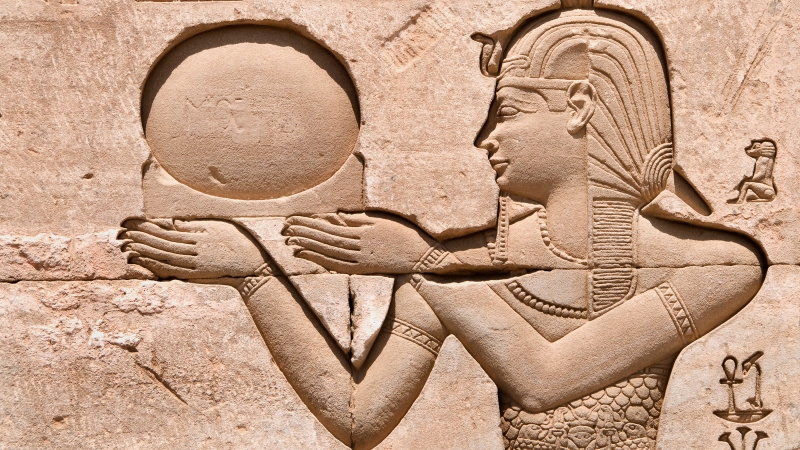
Photo: livescience.com -
It is a fact that the assassination of Pompey was a famous event in her reign. Cleopatra and her forces were still fighting against Ptolemy XIII within Alexandria in the summer of 49 BC when Pompey's son Gnaeus Pompeius arrived, seeking military assistance on his father's behalf. Caesar compelled Pompey and his supporters to flee to Greece after returning to Italy from the battles in Gaul and crossing the Rubicon in January 49 BC. Cleopatra and Ptolemy XIII, in what was possibly their final joint decree, consented to Gnaeus Pompeius' request and sent his father 60 ships and 500 warriors, including the Gabiniani, a move that helped erase some of the debt owing to Rome. After losing the war against her brother, Cleopatra was forced to evacuate Alexandria and retreat to the Theban region. Cleopatra had traveled to Roman Syria with her younger sister, Arsinoe IV, in the spring of 48 BC to gather an invading force that would head to Egypt. She returned with an army, but her approach to Alexandria was thwarted by her brother's forces, which included some Gabiniani who had been enlisted to fight against her, so she camped outside Pelousion in the eastern Nile Delta.
On 9 August 48 BC, Caesar, and Pompey's forces clashed in Greece at the crucial Battle of Pharsalus, resulting in the defeat of much of Pompey's army and his forced escape to Tyre, Lebanon. Pompey eventually determined that Egypt would be his place of sanctuary, where he could replenish his soldiers, because of his close friendship with the Ptolemies. Ptolemy XIII's advisers, on the other hand, were concerned about Pompey utilizing Egypt as a base in a protracted Roman civil war. Pompey landed by ship at Pelousion after being welcomed by a written message in a ruse contrived by Theodotus, only to be ambushed and stabbed to death on September 28, 48 BC. Ptolemy XIII believed he had proved his dominance while also defusing the crisis by having Pompey's severed and embalmed head delivered to Caesar, who arrived in Alexandria in early October and took up residence at the royal palace. Caesar conveyed his grief and fury over Pompey's death and urged both Ptolemy XIII and Cleopatra to disband their forces and reconcile.
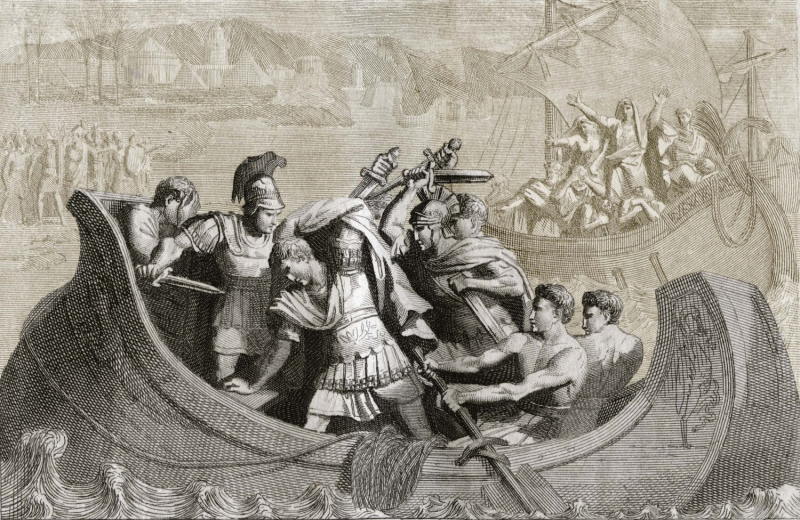
The assassination of Pompey -Photo: pocketmags.com 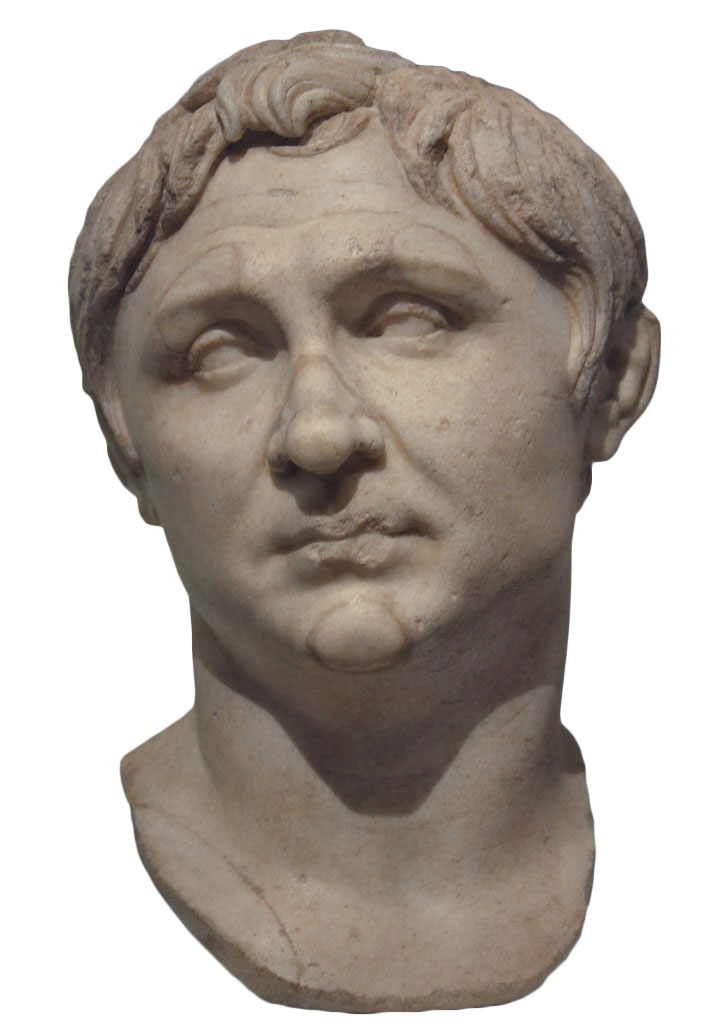
Pompey the Great -Photo: roman-empire.net -
One of the most interesting facts about Cleopatra is that her partners were also political allies. Ptolemy XIII arrived in Alexandria at the head of his army, defying Caesar's order that he disband and depart his army before his arrival. Cleopatra first sent agents to Caesar, but after learning that Caesar was having affairs with royal women, she traveled to Alexandria to visit him in person. According to historian Cassius Dio, she did so without alerting her brother, dressed attractively, and charmed Caesar with her wit. Plutarch gives a completely different, and possibly legendary, account, claiming she was wrapped inside a bed sack and smuggled into the palace to meet Caesar.
When Ptolemy XIII discovered that his sister was in the palace with Caesar, he sought to incite a disturbance in Alexandria, but he was apprehended by Caesar, who used his oratory abilities to quiet the enraged throng. Cleopatra and Ptolemy XIII were subsequently taken before the assembly of Alexandria, where Caesar disclosed Ptolemy XII's previously possessed written testament, which named Cleopatra and Ptolemy XIII as his joint-heirs. Caesar then attempted to arrange for the other two siblings, Arsinoe IV and Ptolemy XIV, to rule over Cyprus together, removing any alternative contenders to the Egyptian throne while also soothing the Ptolemaic.
Cleopatra carefully chose Antony as her heir-producer partner because he was regarded as the most influential Roman figure following Caesar's death. With his triumvirate powers, Antony also had broad authority to return to Cleopatra's old Ptolemaic lands that were now in Roman control. While both Cilicia and Cyprus were clearly under Cleopatra's power by November 19, 38 BC, the transfer most likely occurred earlier in the winter of 41-40 BC, during her time with Antony.
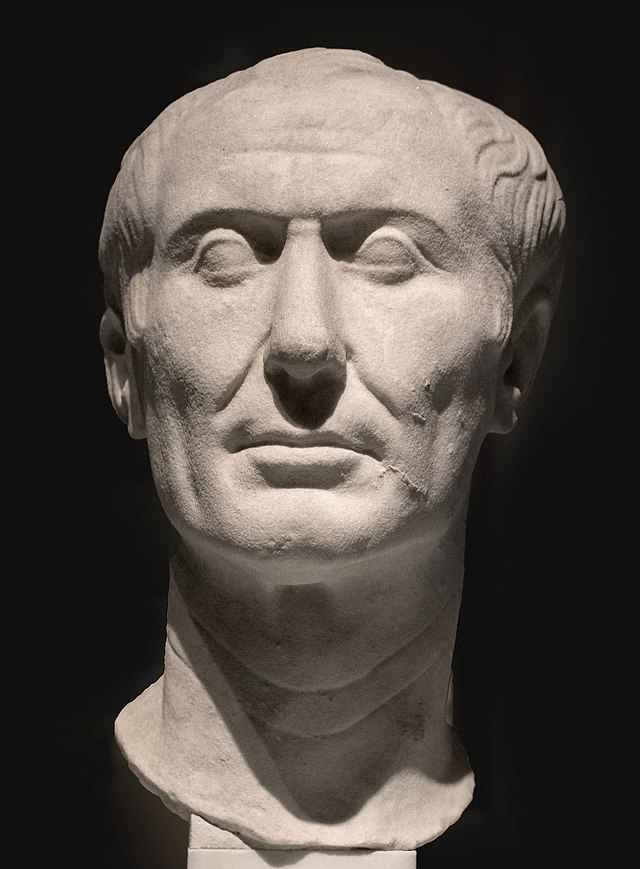
Julius Caesar -Photo: vi.wikipedia.org 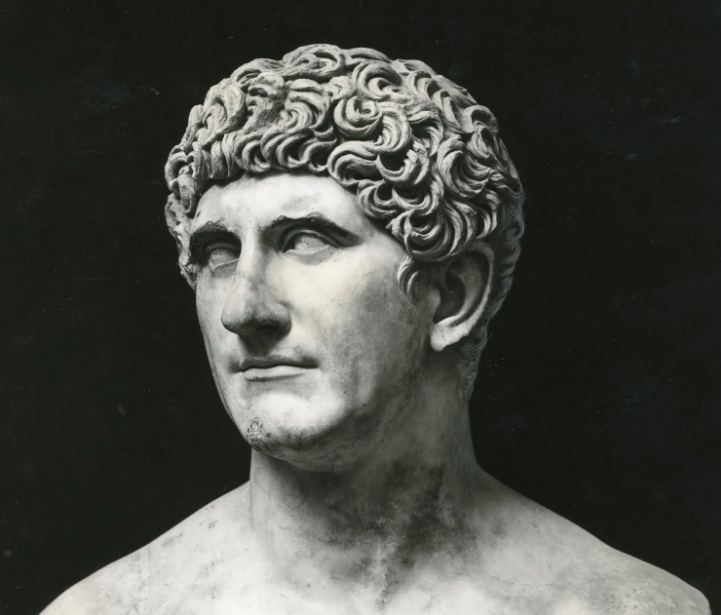
Mark Antony -Photo: britannica.com -
It is a fact that Cleopatra died in an apparent suicide. Cleopatra VII, the last ruler of Ptolemaic Egypt, died in Alexandria on August 10 or 12, 30 BC, when she was 39 years old. According to popular opinion, Cleopatra poisoned herself by permitting an asp (Egyptian cobra) to bite her, although according to Roman-era historians Strabo, Plutarch, and Cassius Dio, Cleopatra poisoned herself by introducing the poison with a pointed tool such as a hairpin. Modern historians argue the veracity of historical accounts concerning snakebites as the cause of death, as well as whether or not she was killed. Some scholars believe that her Roman political opponent Octavian drove her to commit suicide in a manner of her choosing. Cleopatra's tomb's location remains unclear. Octavian let her and her husband, the Roman politician and general Mark Antony, who stabbed himself with a sword, be buried together properly.
Cleopatra's death essentially ended the Roman Republic's final conflict between the remaining triumvirs Octavian and Antony, in which Cleopatra sided with Antony, the father of three of her children. Following their defeat at the 31 BC Battle of Actium in Roman Greece, Antony and Cleopatra fled to Egypt, where Octavian invaded and defeated their forces. Suicide allowed her to avoid the humiliation of being exhibited as a prisoner in a Roman triumph commemorating Octavian's military achievements, who would become Rome's first emperor and be known as Augustus in 27 BC. Octavian assassinated Cleopatra's son Caesarion (also known as Ptolemy XV), Julius Caesar's rival heir, in Egypt, but saved her children with Antony and transported them to Rome. Cleopatra's death signaled the end of the Hellenistic and Ptolemaic periods in Egypt, as well as the start of Roman Egypt, which became a province of the Roman Empire.

Death of Cleopatra -Photo: vi.m.wikipedia.org 
Death of Cleopatra -Photo: history.com -
One of the interesting facts about Cleopatra is that she had four children. Cleopatra's three surviving children, Cleopatra Selene II, Alexander Helios, and Ptolemy Philadelphos, were taken to Rome to be guarded by Octavian's sister Octavia the Younger, a former wife of their father. Caesarion, Cleopatra's alleged child with Caesar, was born on June 23, 47 BC, and was originally named "Pharaoh Caesar," according to a stele at Memphis' Serapeum. Caesar stayed publicly silent about Caesarion, possibly because of his still childless marriage with Calpurnia. Cleopatra, on the other hand, made numerous official declarations naming Caesar as Caesarion's father. Caesarion was executed by the Roman emperor Augustus following her suicide.
Cleopatra Selene II and Alexander Helios were present during Octavian's Roman triumph in 29 BC. After this time, the fates of Alexander Helios and Ptolemy Philadelphus are unknown. Cleopatra Selene II was engaged to Juba II, son of Juba I, whose North African kingdom of Numidia had been transformed into a Roman province by Julius Caesar in 46 BC due to Juba I's backing of Pompey. After their wedding in 25 BC, the emperor Augustus established Juba II and Cleopatra Selene II as the new rulers of Mauretania, where they transformed the old Carthaginian city of Iol into their new capital. Cleopatra Selene II brought many renowned intellectuals, artists, and counselors from her mother's royal court in Alexandria to Caesarea, which is today infused with Hellenistic Greek culture. In recognition of their Ptolemaic dynasty background, she also called her son Ptolemy of Mauretania.
Cleopatra Selene II died in 5 BC, and when Juba II died in 23/24 AD, his son Ptolemy replaced him. Ptolemy was eventually executed by the Roman emperor Caligula in 40 AD, possibly on the grounds that he had illegally coined his own royal coinage and used regalia designated for the Roman emperor. Ptolemy of Mauretania was the last known Ptolemaic ruler, while Queen Zenobia of the short-lived Palmyrene Empire during the Third Century Crisis claimed ancestry from Cleopatra. A Cleopatra cult existed as late as 373 AD, when Petesenufe, an Egyptian writer of the Book of Isis, explained that he gold-plated the image of Cleopatra.
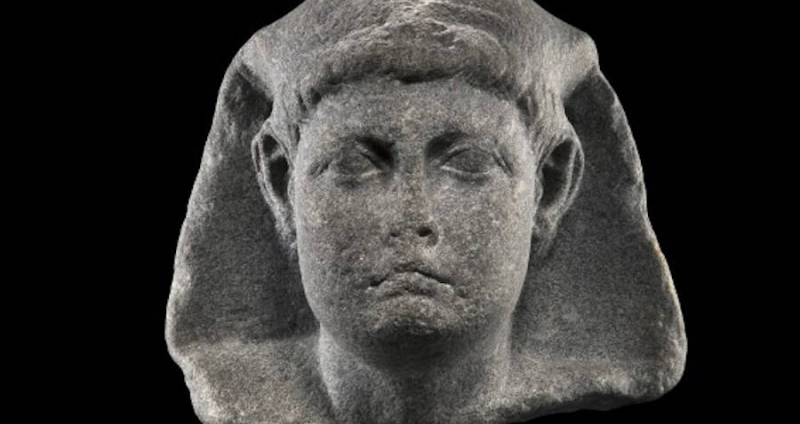
Caesarion -Photo: allthatsinteresting.com 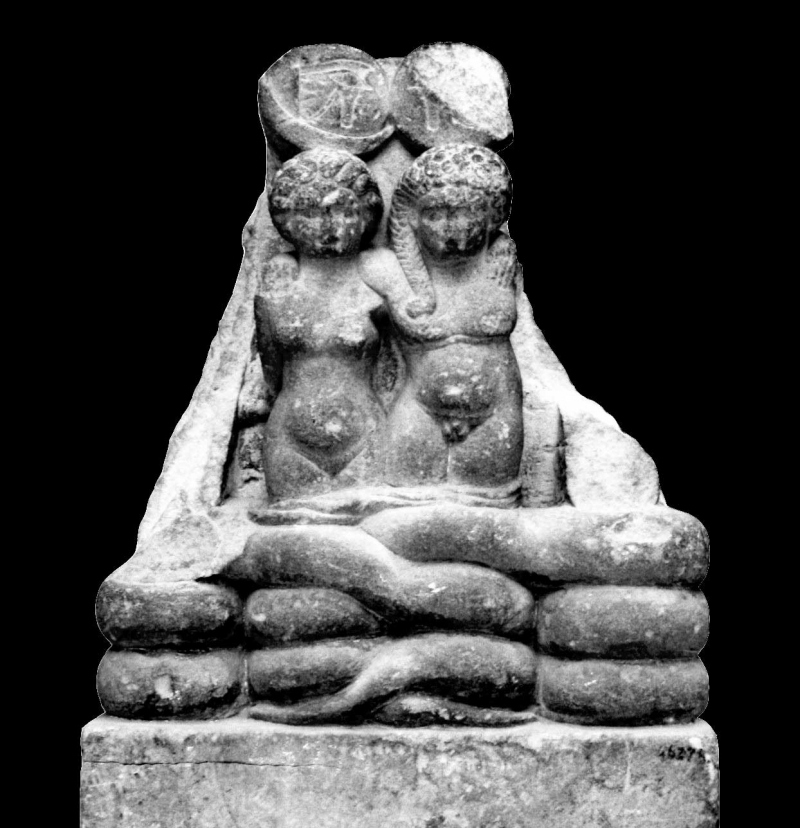
Cleopatra Selene II and Alexander Helios -Photo: tintuc.tieptheo.com













